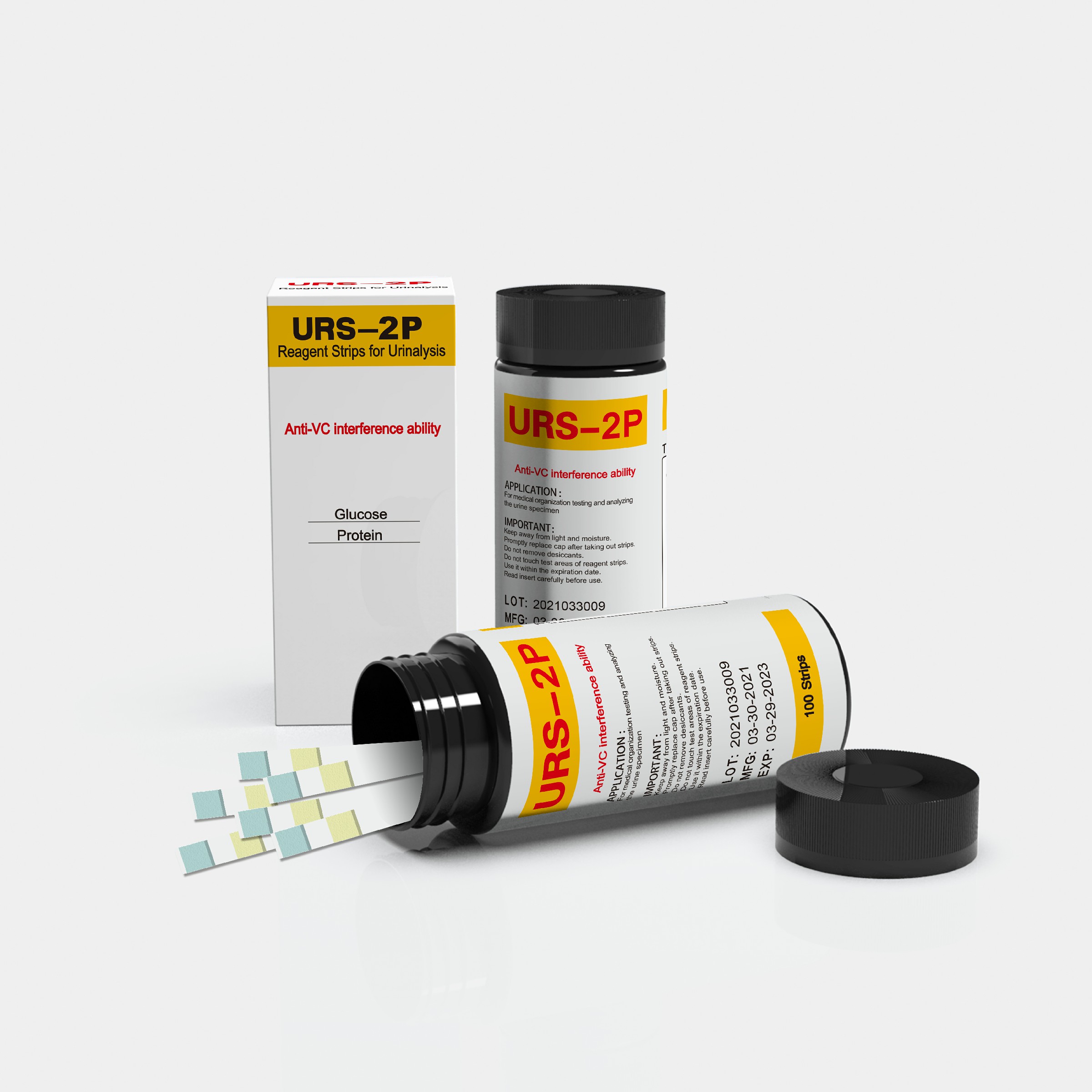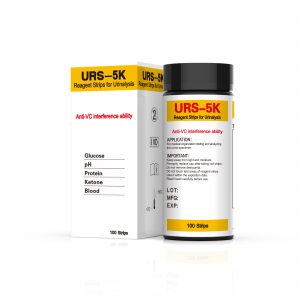Description
Glucose
This test is based on a sequential enzyme reaction. First, glucose oxidase catalyzes the formation of gluconic acid and hydrogen peroxide from the oxidation of glucose. A second enzyme, peroxidase, catalyzes the reaction of hydrogen peroxide with potassium iodide chromogen to oxidize the chromogen to colors ranging from blue through greenish-brown, and brown to dark-brown.
Reactivity of the test decreases as the specific gravity and/or pH of urine increases, and may also vary with temperature. Ascorbic acid (more than 50 mg/dl) and ketone bodies (more than 40 mg/dl) may cause a false negative result for a specimen containing a small amount of glucose (100 mg/dl). However, the combinations of such ketone levels and low glucose levels are metabolically improbable.
Protein
This test is based on the color change of the indicator tetrabromophenol blue. A positive reaction is indicated by a color change from yellow through green and then to greenish-blue.
The minimum sensitivity of this test is 10 mg/dl of protein in urine. Highly buffered alkaline urines (pH 9) may give false negative results. The interpretation of results is also difficult in turbid urine specimens.













Reviews
There are no reviews yet.